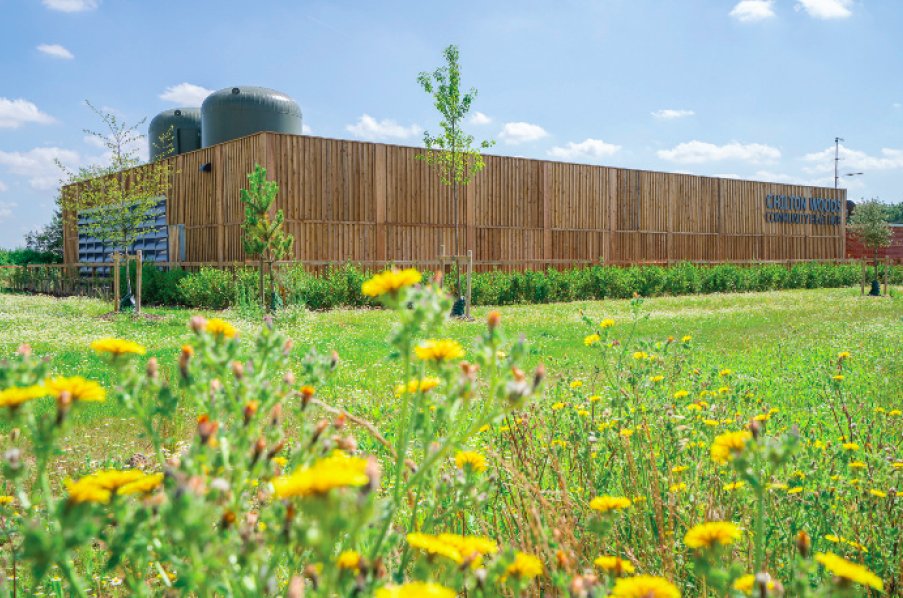
Neal Herbert, GTC Managing Director discusses what housebuilders and developers need to get right before the Future Homes Standard
The direction of travel is clear: new homes will need to have all heating and hot water delivered through low carbon methods rather than gas boilers. That’s the core intent of the Future Homes Standard (FHS) when it considers heating in new build homes – reduce carbon emissions by 75-80%.
At the time of writing, government and industry bodies indicate that FHS and its associated regulations will be laid in late 2025, take effect from 2026, and then move through a transitional period before full enforcement. This means that decisions you make on sites now must be Future Homes Standard-ready, otherwise you run the risk of costly upgrades later down the line.
For low-rise, low-density schemes there are two proven options that deserve your attention because they consider grid capacity constraints, simplify homeowner experience, and future-proof carbon performance: community heat hubs (lowtemperature heat networks with central plant) and networked ground source heat pumps using shared ground arrays.
In this article we look at some of the contracting considerations that matter most if you want these systems to perform technically, commercially and for your customers.
- Match the solution to site physics and planning
Community heat hubs centralise plant, utilising air source heat pumps with thermal storage and back-up electric boilers. Each plot’s heat and hot water is delivered via a low-temperature heat network and heat interface unit (HIU). They behave, from the occupier’s perspective, much like a combi boiler with instantaneous hot water and compact inhome kit but remove external air source heat pump units from façades and gardens. This is useful where aesthetics, noise, or plot space are constrained.Guidance suggests this model shines on phases of 150 plots or more, where diversity and storage shave peaks and reduce reinforcement risk. The community heat hub forms a single, controllable grid exit point, and thermal stores provide demand-side response headroom at winter peak.
Networked ground source heat pumps connect multiple homes to a shared ground loop with an individual heat pump inside each dwelling. Electrical peaks are lower and flatter than individual air source heat pumps, seasonal performance is excellent due to stable ground temperatures, and external noise/visual issues are minimal. The shared array is buried in streets or open space.
- Grid strategy: diversify, store, and stage
Community heat hubs allow you to diversify demand across plots and shift load via thermal stores, this significantly lowers a site’s overall peak demand compared to schemes installing individual air source heat pumps.Networked ground source heat pumps only require the same grid capacity as homes heated by gas and reduce electrical peaks, removing the risk of grid capacity constraint.
In both cases, controls can be specified that prioritise offpeak charging of stores and weather-compensated flow temperatures, like a bundled smart thermostat.
- Sales and handover: make low-carbon easy to live with
Community heat hubs come at a lower cost for housebuilders and lower customer bills by up to 20% in comparison to individual air source heat pumps. Residents should get simple, consistent guidance on how their HIU or in-home ground source heat pump works, who bills them, servicing intervals, and how to get help.For networked ground source heat pumps, provide clear information on the cylinder footprint and reheat times. It’s also worth noting that networked ground source heat pumps offer up to five times the efficiency of gas and 30% increased efficiency than an equivalent individual air source heat pump.
- Plan for compliance today – and headroom tomorrow
FHS is part of a pathway, not an endpoint. Choose architectures that can tighten flow temperatures, integrate more storage, and benefit from a decarbonising grid without major rework. Community heat hubs and networked ground source heat pumps both offer that runway – provided you contract for outcomes, not just equipment. The winners will be schemes that read the policy tea leaves early, secure grid connections intelligently, and deliver quiet, reliable, fairly priced heat that customers barely notice – because it just works.
For more information, go to www.rdr.link/dbg025









